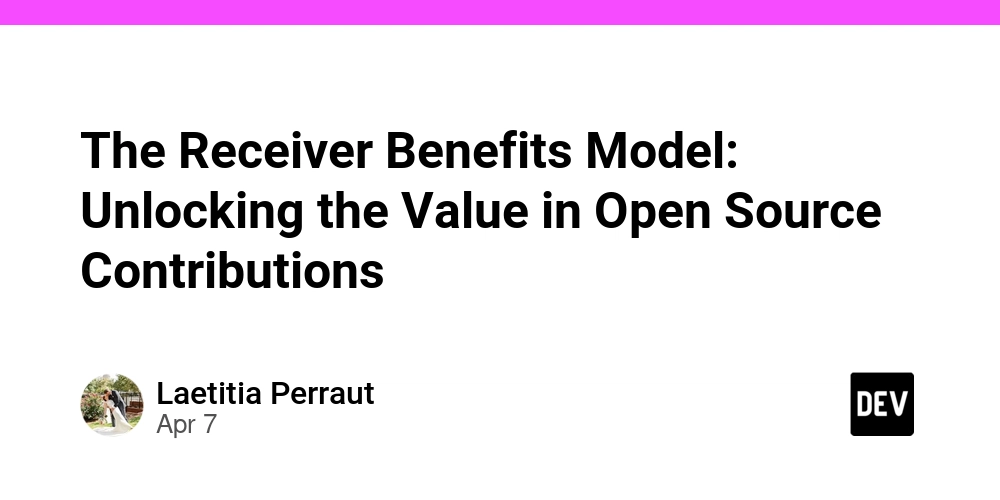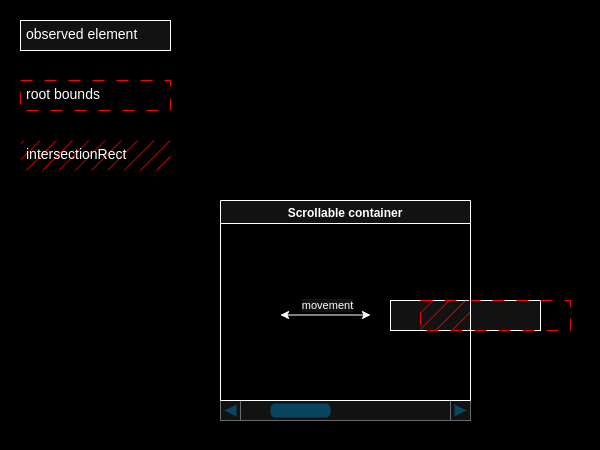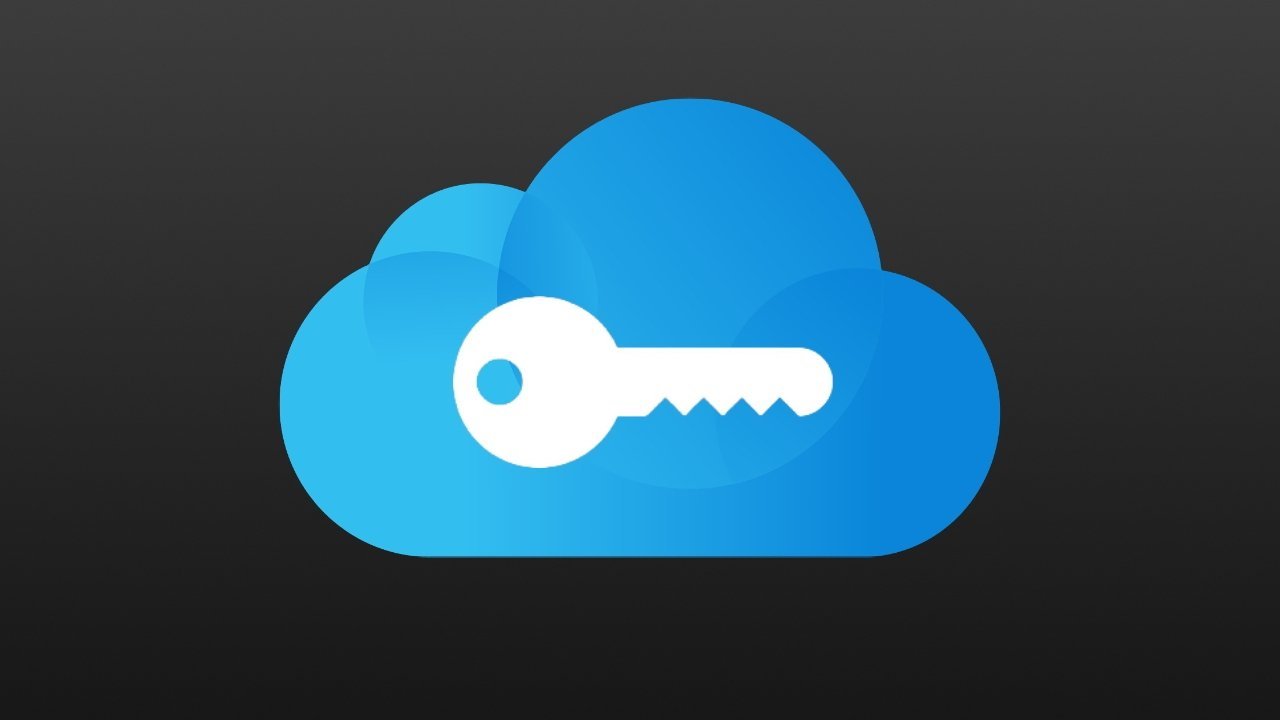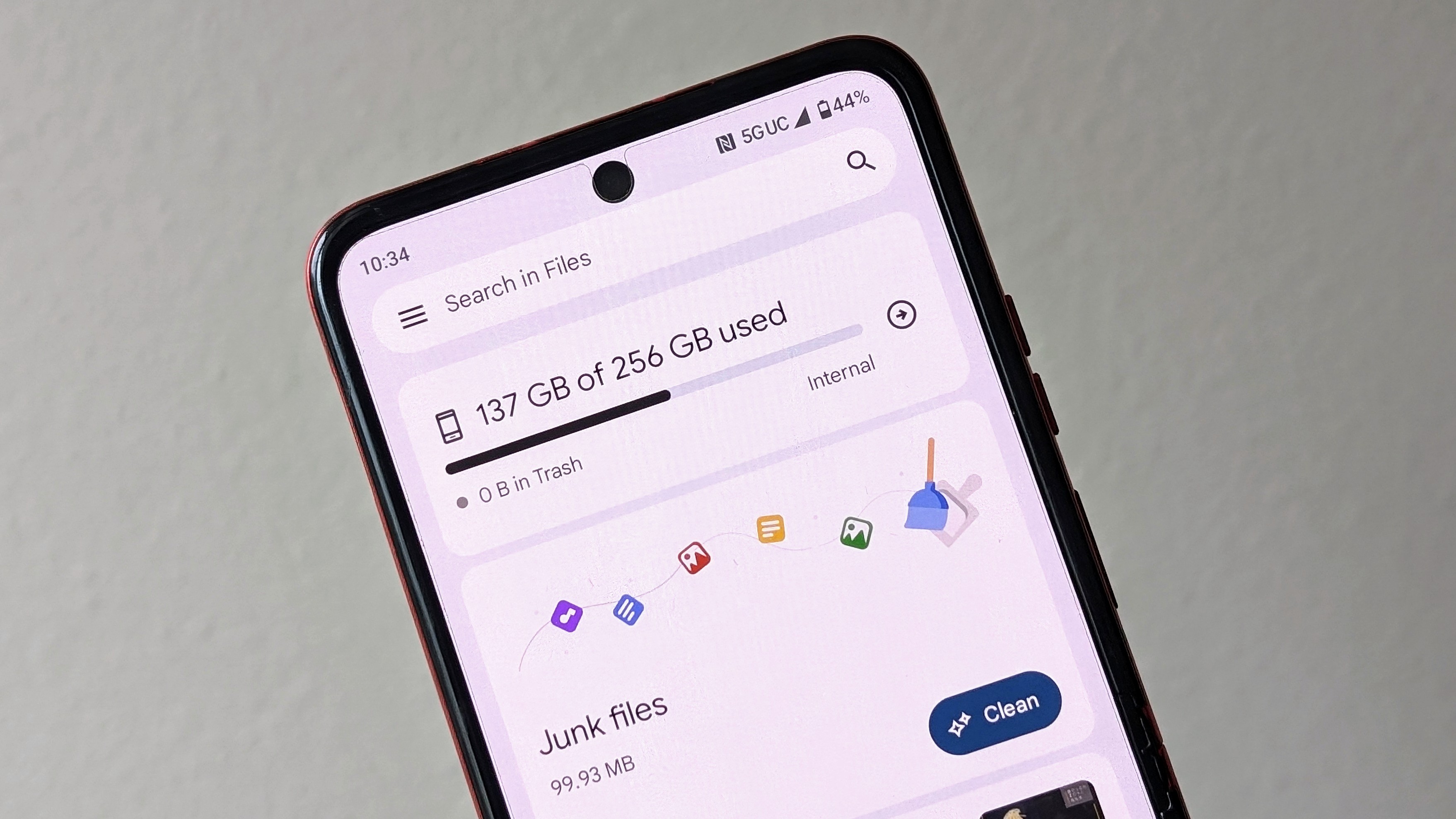The Receiver Benefits Model: Unlocking the Value in Open Source Contributions
Abstract This post dives deep into the Receiver Benefits Model and its transformative role in open source contributions. We explore how companies and individuals can leverage cost efficiency, rapid innovation, community collaboration, transparency, and strategic financial models to maximize open source value. In addition, we provide historical context, core concepts, real-world applications, and future trends that are essential in navigating today’s digital ecosystem. Drawing on additional sources and real-world examples, this article also includes practical tables, bullet lists, and relevant links to empower both technical and non-technical readers to understand and embrace the potential of open source software. Introduction In a world where technology evolves rapidly, engaging with open source communities is no longer optional—it’s essential. The Receiver Benefits Model offers a robust framework that highlights the many advantages of open source projects. By tapping into these benefits, companies can achieve significant cost savings, drive innovation, and increase security simultaneously. Furthermore, individuals and organizations can align their goals with community-driven projects to unlock even more opportunities in terms of funding, collaboration, and transparency. In this post, we’ll explore how the Receiver Benefits Model works, why it matters, and how you can leverage it to transform your approach to technology development. We will also connect the dots with practical examples, challenges on the road, and the future outlook in the open source ecosystem. Background and Context Open source software is built on the idea of sharing and collaboration. Traditionally, organizations used proprietary software with costly licenses. However, open source solutions have transformed the landscape by offering higher flexibility and lower costs. Historically, projects began as grassroots initiatives and evolved into globally recognized platforms (see Open Source Initiative). The Receiver Benefits Model is based on the core principles of economic efficiency and shared innovation. Before diving into its benefits, it’s important to understand some key definitions: Open Source Software: Software whose source code is publicly available for modification and distribution. Receiver Benefits: The positive externalities received by users, developers, and businesses who engage with open source projects. Collaboration Ecosystem: A framework that supports exchange of ideas, pooling of resources, and collective troubleshooting among community members. Organizations such as License Token are leading the conversation around sustainable funding and ethical software development practices (sustainable funding for open source). Core Concepts and Features Cost Efficiency One of the primary advantages of open source is the ability to reduce or eliminate licensing fees. By avoiding expensive proprietary licenses, companies can reallocate resources towards research, innovation, and development. This model empowers startups to compete with established giants: Lower upfront costs: No licensing fees mean reduced expenditure. Reallocation of funds: Savings can be invested in R&D. Economic scalability: Allows businesses to scale without proportional increases in operating costs. Innovation and Agility Engaging with open source projects brings organizations closer to a dynamic community of highly motivated contributors (open source contributors’ motivation). These communities are at the forefront of rapid technological advancements: Rapid iterations: Contributions from a diverse group lead to faster improvements. Community-led innovation: A global pool of ideas can quickly adapt to technological changes. Agility in product development: Continuous feedback and development allow for better product evolution. Community and Collaboration The strength of the receiver benefits model lies in its ability to create a global network of thinkers and technologists. Here are a few key points: Shared knowledge: A community offers extensive support and expert advice. Reduced support costs: Collaborative troubleshooting minimizes expensive external support. Enhanced internal capabilities: Participation in projects builds in-house talent and knowledge. Boosted reputation: Active community engagement can improve a company’s market standing (community-driven projects). Transparency and Security Open source projects inherently promote transparency, which is crucial for security and ethical software development. Because code is openly scrutinized, vulnerabilities can be identified and resolved faster: Collective code review: Multiple eyes help spot security flaws quickly. Ethical standards: Transparency aligns with ethical software development practices (ethical software development). Improved risk management: Open collaboration aids in b

Abstract
This post dives deep into the Receiver Benefits Model and its transformative role in open source contributions. We explore how companies and individuals can leverage cost efficiency, rapid innovation, community collaboration, transparency, and strategic financial models to maximize open source value. In addition, we provide historical context, core concepts, real-world applications, and future trends that are essential in navigating today’s digital ecosystem. Drawing on additional sources and real-world examples, this article also includes practical tables, bullet lists, and relevant links to empower both technical and non-technical readers to understand and embrace the potential of open source software.
Introduction
In a world where technology evolves rapidly, engaging with open source communities is no longer optional—it’s essential. The Receiver Benefits Model offers a robust framework that highlights the many advantages of open source projects. By tapping into these benefits, companies can achieve significant cost savings, drive innovation, and increase security simultaneously. Furthermore, individuals and organizations can align their goals with community-driven projects to unlock even more opportunities in terms of funding, collaboration, and transparency.
In this post, we’ll explore how the Receiver Benefits Model works, why it matters, and how you can leverage it to transform your approach to technology development. We will also connect the dots with practical examples, challenges on the road, and the future outlook in the open source ecosystem.
Background and Context
Open source software is built on the idea of sharing and collaboration. Traditionally, organizations used proprietary software with costly licenses. However, open source solutions have transformed the landscape by offering higher flexibility and lower costs. Historically, projects began as grassroots initiatives and evolved into globally recognized platforms (see Open Source Initiative).
The Receiver Benefits Model is based on the core principles of economic efficiency and shared innovation. Before diving into its benefits, it’s important to understand some key definitions:
- Open Source Software: Software whose source code is publicly available for modification and distribution.
- Receiver Benefits: The positive externalities received by users, developers, and businesses who engage with open source projects.
- Collaboration Ecosystem: A framework that supports exchange of ideas, pooling of resources, and collective troubleshooting among community members.
Organizations such as License Token are leading the conversation around sustainable funding and ethical software development practices (sustainable funding for open source).
Core Concepts and Features
Cost Efficiency
One of the primary advantages of open source is the ability to reduce or eliminate licensing fees. By avoiding expensive proprietary licenses, companies can reallocate resources towards research, innovation, and development. This model empowers startups to compete with established giants:
- Lower upfront costs: No licensing fees mean reduced expenditure.
- Reallocation of funds: Savings can be invested in R&D.
- Economic scalability: Allows businesses to scale without proportional increases in operating costs.
Innovation and Agility
Engaging with open source projects brings organizations closer to a dynamic community of highly motivated contributors (open source contributors’ motivation). These communities are at the forefront of rapid technological advancements:
- Rapid iterations: Contributions from a diverse group lead to faster improvements.
- Community-led innovation: A global pool of ideas can quickly adapt to technological changes.
- Agility in product development: Continuous feedback and development allow for better product evolution.
Community and Collaboration
The strength of the receiver benefits model lies in its ability to create a global network of thinkers and technologists. Here are a few key points:
- Shared knowledge: A community offers extensive support and expert advice.
- Reduced support costs: Collaborative troubleshooting minimizes expensive external support.
- Enhanced internal capabilities: Participation in projects builds in-house talent and knowledge.
- Boosted reputation: Active community engagement can improve a company’s market standing (community-driven projects).
Transparency and Security
Open source projects inherently promote transparency, which is crucial for security and ethical software development. Because code is openly scrutinized, vulnerabilities can be identified and resolved faster:
- Collective code review: Multiple eyes help spot security flaws quickly.
- Ethical standards: Transparency aligns with ethical software development practices (ethical software development).
- Improved risk management: Open collaboration aids in building robust security protocols (risk management strategies).
Financial and Strategic Benefits
Companies not only gain operational advantages but also unlock strategic financial opportunities:
- Revenue models: Various open source project revenue models provide financial sustainability (open source project revenue models).
- Long-term strategic alignment: Investing in open source can yield competitive advantages and market positioning.
- Sustainable funding strategies: Innovative funding models ensure the long-term viability of open source projects (open source project financial strategies).
Applications and Use Cases
Use Case 1: Corporate Innovation and Cost Savings
Large organizations have increasingly embraced open source to drive innovation while reducing costs. For example, by integrating open source tools, companies are able to replace expensive proprietary solutions with community-driven software. This shift not only decreases software licensing costs but also accelerates development and deployment cycles. The table below highlights key contrasts.
| Key Aspect | Proprietary Software | Open Source Software |
|---|---|---|
| Licensing Costs | High | Minimal or none |
| Innovation Speed | Slower, structured release | Rapid, community-driven |
| Customizability | Limited | Highly adaptable |
| Support Model | Expensive contracts | Community and volunteer support |
| Transparency | Proprietary, closed | Open and verifiable |
Use Case 2: Startups and Indie Hackers
For startups and indie hackers, open source is a game changer. Without the burden of high license fees, new ventures can allocate their scarce resources into coding, marketing, and rapid prototyping. Such an approach allows them to:
- Build products faster.
- Access a pool of ready-made tools.
- Leverage community feedback for iterative development.
An example of this innovative approach can be seen in projects that use open source frameworks to develop blockchain-based solutions. As discussed in this Dev.to post, modern funding for digital assets leverages community insights and open source contributions to achieve financial sustainability.
Use Case 3: Enhancing Collaborative Ecosystems
Universities and research institutions often leverage open source for cutting-edge research projects. By joining forces with global communities, researchers benefit from a richer pool of code and ideas. This interdisciplinary collaboration is critical for projects that require:
- Distributed problem solving.
- Peer reviews.
- Transparent development processes.
Challenges and Limitations
While the Receiver Benefits Model has numerous advantages, several challenges need to be addressed for successful adoption:
- Technical Complexity: Integrating open source projects into existing infrastructures may require specialized skills.
- Adoption Barriers: Organizations unfamiliar with open source dynamics may face cultural or operational hurdles.
- Security Concerns: Although transparency is a benefit, it can also open pathways for exploitation if not properly managed.
- Sustainability of Funding: Not all open source projects have clear financial models, requiring innovative funding strategies (innovative funding for open source projects).
Bullet List of Key Challenges:
- Integration challenges: Adapting existing systems to incorporate open source tools.
- Resource allocation: Ensuring developers have time to contribute actively.
- Intellectual property issues: Managing contributions and related legal considerations.
- Sustaining community engagement: Keeping the community motivated and active.
Future Outlook and Innovations
Embracing Tokenization and Blockchain
Innovation in open source funding and sustainability is evolving with blockchain-based platforms. Tokenization of open source licenses and contributions can lead to new models of compensation and funding. For instance, License Token is pioneering ways to integrate blockchain technology with open source licensing, helping innovators receive compensation and recognition for their contributions.
Cross-Chain Interoperability
Another future trend is the growing need for cross-chain interoperability. Projects are increasingly exploring solutions that blend open source collaboration with multiple blockchain networks, ensuring secure and efficient data exchanges—a trend echoing in articles such as Arbitrum and cross-chain bridges.
Enhanced Community Governance
The future promises more democratized approaches to open source governance. New models of decentralized governance are being trialed that empower communities to make decisions collectively, enhancing transparency and reducing the risk of centralized exploitation. This evolution is supported by evolving strategies and best practices outlined in community engagement strategies (community engagement strategies).
Integration of Ethical and Sustainable Practices
Sustainable development in the open source space is receiving more attention. Ethical software development principles and sustainable funding models are being embedded into new projects to ensure that open source solutions can thrive in the long term. This ethical dimension is highlighted in resources like ethical software development and software sustainability.
The Role of Developer Communities
Developer communities are at the heart of open source evolution. From enhancing software functionality to exploring new revenue streams, these communities are continuously evolving. A recent Dev.to post explores how developers are now leveraging blockchain and NFT technologies to create new revenue models for open source projects.
Summary
The Receiver Benefits Model offers a holistic approach to understanding and leveraging the myriad benefits of open source contributions. From cost efficiency to innovation, community collaboration, transparency, and strategic financial benefits, the model provides a roadmap for enhancing technological capabilities through open source projects.
In summary:
- Cost Efficiency: Open source adoption reduces licensing fees and promotes reallocation of funds.
- Innovation: Engaging with motivated communities fosters rapid development and agile product modifications.
- Collaboration: The collective effort drives not only better code but also increased market reputation and diminished support costs.
- Transparency & Security: Open source projects benefit from elevated security measures owing to community scrutiny.
- Financial Benefits: Innovative revenue models help ensure long-term sustainability for projects and organizations alike.
This model is instrumental for businesses ranging from large enterprises to startups. By understanding and leveraging its benefits, companies can foster an environment of perpetual innovation while contributing robustly to the open source ecosystem.
For more insights on the subject, refer to the Original Article on Receiver Benefits Model and explore resources like sustainable funding for open source and open source project funding strategies.
Additional Resources and Recommendations
Here are further recommended resources for those interested in diving deeper into open source funding, blockchain integration, and innovative governance models:
-
Open Source Overview:
-
Blockchain and Tokenization:
-
Community Engagement:
For a deeper understanding of related topics from other expert insights, consider reading:
- License Token NFTs Reshaping Digital Rights Management
- Enhancing Open Source Visibility with License Token
- Open Source Developer Revenue Streams and Income Strategies
Conclusion
The digital landscape is shifting, and the Receiver Benefits Model stands out as a beacon for unlocking the full value of open source contributions. Whether it’s through cost savings, enhanced innovation, robust collaboration, improved transparency, or novel financial models, open source presents unparalleled opportunities.
Organizations that embrace this model not only gain a competitive edge but also push the boundaries of what’s possible through collaborative innovation. As we move forward into a future marked by blockchain integration and decentralized governance, understanding and leveraging these benefits will be critical.
By transforming legacy systems and funding models through open source, stakeholders can ensure sustainable practices and long-term success that benefits both the global digital community and individual innovators. Embrace the Receiver Benefits Model to unlock a future where technology, ethics, and sustainability intersect in exciting new ways.
Through detailed insights, practical applications, and forward-thinking strategies, it becomes clear how integral open source is to modern software development. Empower your organization with these benefits and join the community-driven movement that’s redefining the future of technology.
Happy coding and innovating!










































































































































































![[The AI Show Episode 142]: ChatGPT’s New Image Generator, Studio Ghibli Craze and Backlash, Gemini 2.5, OpenAI Academy, 4o Updates, Vibe Marketing & xAI Acquires X](https://www.marketingaiinstitute.com/hubfs/ep%20142%20cover.png)





























































































































![[DEALS] The Premium Learn to Code Certification Bundle (97% off) & Other Deals Up To 98% Off – Offers End Soon!](https://www.javacodegeeks.com/wp-content/uploads/2012/12/jcg-logo.jpg)
![From drop-out to software architect with Jason Lengstorf [Podcast #167]](https://cdn.hashnode.com/res/hashnode/image/upload/v1743796461357/f3d19cd7-e6f5-4d7c-8bfc-eb974bc8da68.png?#)








































































































.png?#)




(1).jpg?width=1920&height=1920&fit=bounds&quality=80&format=jpg&auto=webp#)





























_Christophe_Coat_Alamy.jpg?#)
.webp?#)
.webp?#)











































































































![Apple Considers Delaying Smart Home Hub Until 2026 [Gurman]](https://www.iclarified.com/images/news/96946/96946/96946-640.jpg)
![iPhone 17 Pro Won't Feature Two-Toned Back [Gurman]](https://www.iclarified.com/images/news/96944/96944/96944-640.jpg)
![Tariffs Threaten Apple's $999 iPhone Price Point in the U.S. [Gurman]](https://www.iclarified.com/images/news/96943/96943/96943-640.jpg)

































































































































